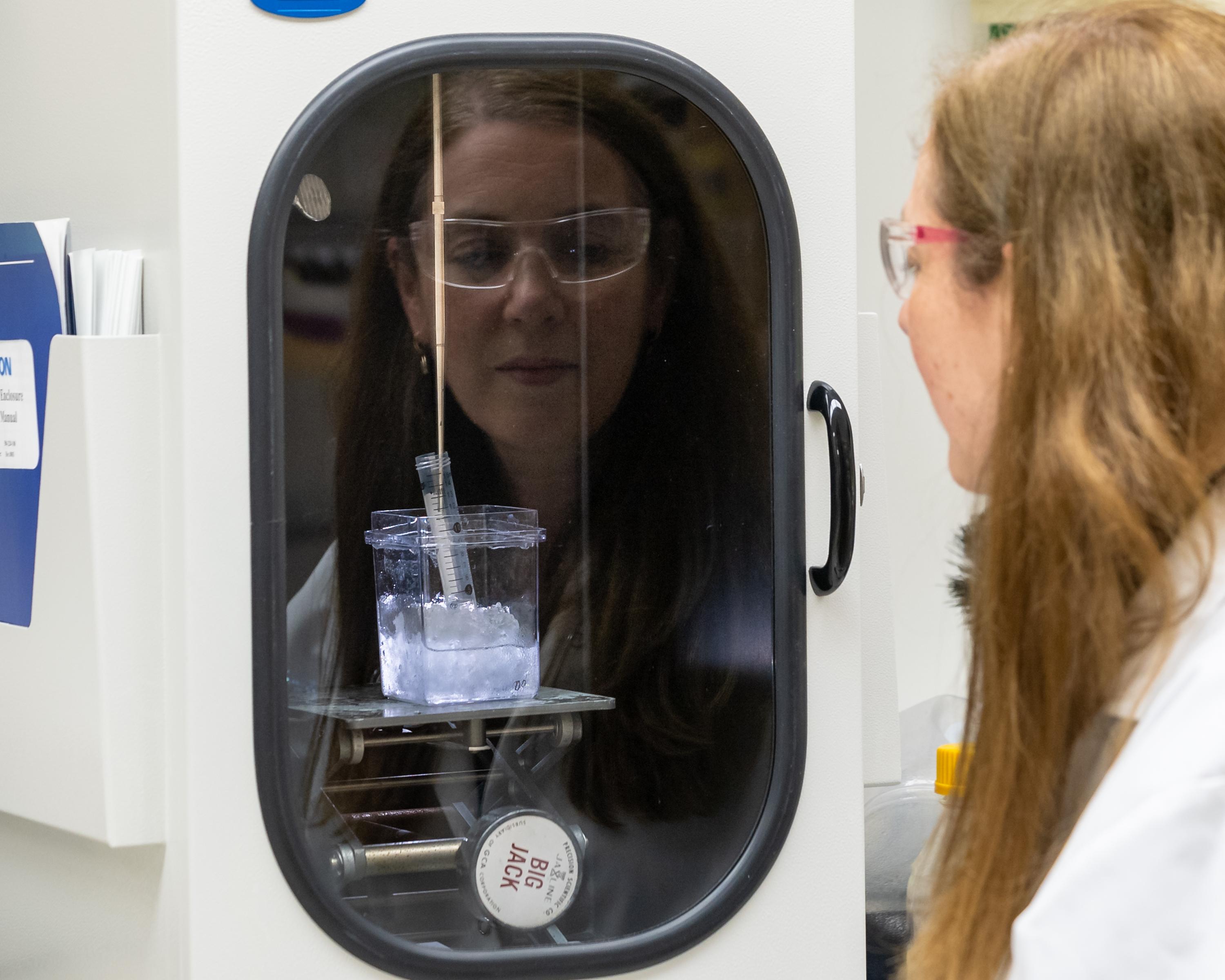Enclosing Radiation-Loaded Particles to Better Seek and Destroy Cancer

Image courtesy of Carlos Jones, Oak Ridge National Laboratory Researcher Sandra Davern looks at non-radioactive metal ions enclosed in biodegradable polymers in her lab at Oak Ridge National Laboratory. Her work is paving the way for enclosing isotopes in the same polymers for targeted treatment of cancer cells.
Being able to deliver drugs directly to diseased cells would improve options for treating diseases. Some radioactive isotopes are already approved to target cancers. When these isotopes change from one isotope to another during the treatment process (for example, through radioactive decay), they emit large amounts of energy. This makes it hard to keep them in place near diseased cells or other targets. Researchers are now testing a way to enclose isotopes in tiny pieces of biodegradable material that will keep the isotopes at treatment sites. This ensures that their energy can kill cancer cells or other targets with little effect on surrounding cells. In this study, researchers show that these polymers successfully contained similar but non-radioactive metal atoms. This is an important step in using these polymers to deliver medical isotopes.




